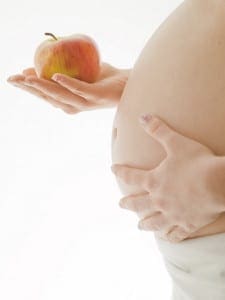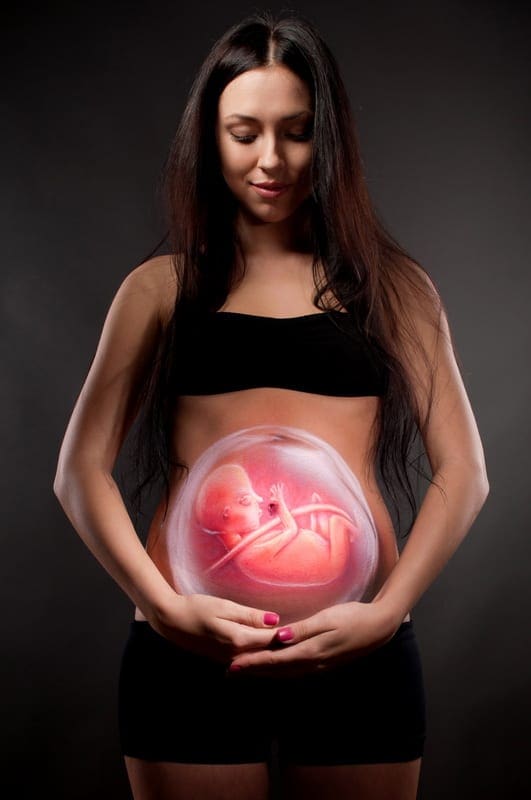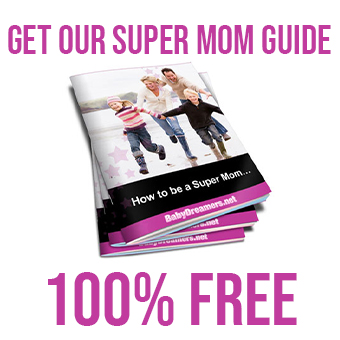The impact of secondhand smoke on pregnancy can be detrimental to both pregnant women and their babies. It is important to understand the harmful effects of secondhand smoke and take steps to minimize exposure for a healthier pregnancy. Secondhand smoke refers to the smoke that is exhaled by a smoker or comes from the burning end of a cigarette, cigar, or pipe. This smoke contains over 7,000 chemicals, including at least 70 that can cause cancer.
When pregnant women are exposed to secondhand smoke, it can increase the risk of various health complications. One of the risks is an increased chance of miscarriage. Studies have shown that women who are exposed to secondhand smoke during pregnancy are more likely to experience miscarriages compared to those who are not exposed. Additionally, secondhand smoke exposure can lead to premature birth, where the baby is born before completing the full term of pregnancy. Premature babies may face a range of health issues and may require special medical care. Furthermore, exposure to secondhand smoke during pregnancy can result in low birth weight, which is associated with an increased risk of developmental problems and health complications for the baby.
To protect pregnant women and their unborn babies from the harmful effects of secondhand smoke, it is essential to reduce exposure at home. Creating smoke-free zones within the home is a practical approach. Designate specific areas where smoking is not allowed, such as bedrooms, living rooms, and other commonly used spaces. This helps to minimize the concentration of secondhand smoke particles in the air, reducing the risk of exposure for pregnant women and their babies. Implementing no-smoking policies in the home is also crucial. Ensure that all family members and visitors are aware of the importance of protecting the pregnant woman and the developing baby by refraining from smoking inside the house.
Another effective strategy is to improve ventilation systems and consider using air purifiers. Proper ventilation helps to remove smoke particles from the indoor environment, reducing exposure for pregnant women and their babies. Additionally, investing in air purifiers can further enhance air quality by filtering out harmful pollutants, including secondhand smoke particles. These measures can significantly contribute to creating a safer and healthier environment for pregnant women and their unborn babies.
Risks of Secondhand Smoke during Pregnancy
Risks of Secondhand Smoke during Pregnancy
During pregnancy, exposure to secondhand smoke can have serious health implications for both the pregnant woman and her unborn baby. It is important to understand the risks associated with secondhand smoke and take necessary precautions to protect the health of both mother and child.
One of the major risks of secondhand smoke during pregnancy is an increased chance of miscarriage. Studies have shown that pregnant women who are exposed to secondhand smoke are more likely to experience complications leading to miscarriage. The toxins in cigarette smoke can interfere with the development of the fetus, causing harm and potentially leading to loss of pregnancy.
Premature birth is another significant risk associated with secondhand smoke exposure during pregnancy. Babies born prematurely are at higher risk of various health problems and may require specialized medical care. The chemicals in secondhand smoke can affect the development of the baby’s lungs and other vital organs, increasing the likelihood of premature birth.
Furthermore, exposure to secondhand smoke during pregnancy has been linked to low birth weight. Babies born with low birth weight are more susceptible to health issues and may face developmental delays. The harmful substances in cigarette smoke can restrict the flow of oxygen and nutrients to the fetus, affecting its growth and leading to lower birth weight.
To minimize these risks, it is crucial for pregnant women to avoid exposure to secondhand smoke as much as possible. Creating a smoke-free environment at home and advocating for smoke-free policies in public places can significantly reduce the chances of harmful exposure and contribute to a healthier pregnancy.
Reducing Secondhand Smoke Exposure at Home
Reducing Secondhand Smoke Exposure at Home
Creating a smoke-free environment at home is crucial for protecting pregnant women and their unborn babies from the harmful effects of secondhand smoke. By implementing practical tips and strategies, you can significantly minimize their exposure and ensure a healthier living space.
- Establishing Smoke-Free Zones: Designate specific areas in your home as smoke-free zones. This means strictly prohibiting smoking in these areas to minimize secondhand smoke exposure for pregnant women and their babies.
- Implementing No-Smoking Policies: Take steps to implement no-smoking policies in your home. Make sure all family members and visitors are aware of the importance of protecting the pregnant woman and the developing baby by refraining from smoking inside the house.
- Creating Ventilation Systems: Consider using proper ventilation systems and air purifiers to reduce the concentration of secondhand smoke particles in the indoor environment. These devices help improve air quality and minimize the health risks associated with secondhand smoke.
By following these practical tips and strategies, you can create a safe and smoke-free environment at home, ensuring the well-being of both pregnant women and their unborn babies. Remember, every effort counts in protecting their health and promoting a healthier living space.
Establishing Smoke-Free Zones
When it comes to protecting pregnant women and their babies from the harmful effects of secondhand smoke, establishing smoke-free zones in the home is crucial. By designating specific areas as smoke-free, you can significantly minimize their exposure to secondhand smoke particles. Here are some guidelines to help you create a smoke-free environment:
- Identify the designated areas: Start by identifying which areas of your home will be smoke-free. Ideally, these areas should include the living room, bedrooms, and any other spaces where the pregnant woman spends a significant amount of time.
- Communicate the rules: Clearly communicate the importance of the smoke-free zones to all family members and visitors. Make sure they understand that smoking is strictly prohibited in these areas to protect the health of the pregnant woman and the developing baby.
- Display no-smoking signs: Place visible no-smoking signs in the designated smoke-free areas to serve as a reminder for everyone. These signs will help reinforce the message and ensure compliance with the smoke-free policy.
- Provide alternatives: If there are family members or visitors who smoke, offer them alternative spaces outside the home where they can smoke without exposing the pregnant woman and the baby to secondhand smoke. Encourage them to use these designated smoking areas away from the smoke-free zones.
Creating smoke-free zones in your home is a proactive step towards safeguarding the health and well-being of pregnant women and their unborn babies. By following these guidelines, you can minimize secondhand smoke exposure and create a healthier environment for everyone in the household.
Implementing No-Smoking Policies
Implementing No-Smoking Policies
Protecting a pregnant woman and her developing baby from the harmful effects of secondhand smoke requires the implementation of strict no-smoking policies within the home. By establishing clear guidelines and ensuring that all family members and visitors are aware of the importance of a smoke-free environment, you can create a safer space for the pregnant woman and her baby.
Here are some steps to help you implement no-smoking policies in your home:
- Educate and communicate: Inform all family members and visitors about the risks of secondhand smoke during pregnancy. Emphasize the importance of protecting the health of the pregnant woman and the developing baby. Encourage open discussions and address any concerns or questions they may have.
- Designate smoking areas: If there are family members or visitors who cannot quit smoking, establish specific outdoor areas where smoking is permitted. Ensure that these areas are well-ventilated and away from entrances or windows to prevent smoke from entering the house.
- Post no-smoking signs: Place visible no-smoking signs throughout the house, particularly in areas where smoking is prohibited. This serves as a constant reminder for everyone to respect the no-smoking policies and protect the health of the pregnant woman and the baby.
- Provide alternatives: Offer support and alternatives to family members or visitors who smoke. Encourage them to explore smoking cessation programs, nicotine replacement therapies, or other methods to help them quit smoking. Let them know that their efforts to quit are not only beneficial for the pregnant woman but also for their own health.
- Lead by example: As a pregnant woman, you can play a crucial role in setting an example for others. Refrain from smoking and demonstrate your commitment to a smoke-free environment. Your actions can inspire and motivate others to follow suit.
Remember, implementing no-smoking policies is not only about protecting the pregnant woman and her developing baby, but it also promotes the overall well-being of everyone in the household. By creating a smoke-free environment, you are fostering a healthier and safer living space for all.
Creating Ventilation Systems
When it comes to protecting pregnant women and their unborn babies from the harmful effects of secondhand smoke, creating proper ventilation systems in the indoor environment can play a crucial role. By exploring the use of ventilation systems and air purifiers, we can effectively reduce the concentration of secondhand smoke particles in the air, ensuring a healthier living space for everyone.
One effective way to improve indoor air quality is by installing ventilation systems that can help remove smoke particles and other pollutants from the air. These systems work by circulating fresh air into the room and expelling the contaminated air outside. By doing so, they can significantly reduce the levels of secondhand smoke in the indoor environment, creating a safer space for pregnant women and their babies.
In addition to ventilation systems, air purifiers can also be a valuable tool in minimizing secondhand smoke exposure. These devices work by filtering the air and trapping harmful particles, including smoke, allergens, and pollutants. By using high-efficiency air purifiers, we can effectively reduce the concentration of secondhand smoke particles in the air, providing a cleaner and healthier environment for pregnant women.
It’s important to note that while ventilation systems and air purifiers can help reduce the concentration of secondhand smoke particles, they do not eliminate the health risks associated with exposure to secondhand smoke entirely. The best way to protect pregnant women and their unborn babies is by creating a smoke-free environment and encouraging smokers to quit. However, implementing proper ventilation systems and using air purifiers can be an additional measure to further minimize the risks.
Supporting the Smoker to Quit
Quitting smoking can be a challenging journey, but with the right support, it is possible for a pregnant woman’s partner or family member to kick the habit and eliminate secondhand smoke exposure for both the pregnant woman and the baby. Here are some strategies to help support the smoker in quitting:
- Open and Honest Communication: Start by having an open and honest conversation with the smoker about the harmful effects of secondhand smoke on the pregnant woman and the baby. Share information about the increased risks of complications and emphasize the importance of a smoke-free environment.
- Offer Encouragement and Understanding: Quitting smoking is not easy, so it’s essential to offer continuous encouragement and understanding to the smoker. Let them know that you believe in their ability to quit and that you are there to support them throughout the process.
- Set a Quit Date: Help the smoker set a quit date and mark it on the calendar. This can create a sense of commitment and motivation to start the journey towards a smoke-free life.
- Explore Nicotine Replacement Therapy: Nicotine replacement therapy, such as nicotine patches or gum, can help reduce cravings and withdrawal symptoms. Encourage the smoker to consult with a healthcare professional to determine the most suitable option.
- Provide Distraction and Healthy Alternatives: Help the smoker find healthy alternatives to smoking. Engaging in physical activities, hobbies, or practicing relaxation techniques can distract from the urge to smoke and promote a healthier lifestyle.
- Offer Supportive Resources: Provide the smoker with resources and information about smoking cessation programs, support groups, or counseling services. These resources can offer additional guidance and support throughout the quitting process.
- Celebrate Milestones: Celebrate each milestone achieved on the journey to quitting smoking. Whether it’s a day, a week, or a month without smoking, acknowledging and celebrating these achievements can boost motivation and reinforce the importance of a smoke-free environment.
Remember, supporting the smoker to quit is not only beneficial for the pregnant woman and the baby but also for the smoker’s own health. By working together and providing the necessary support, you can help create a healthier and smoke-free environment for everyone involved.
Avoiding Secondhand Smoke in Public Places
Pregnant women need to be extra cautious when it comes to avoiding secondhand smoke exposure in public places. It is crucial for their own health as well as the health of their unborn baby. Here are some tips to help pregnant women safeguard themselves and their baby from the harmful effects of secondhand smoke in public places, such as restaurants, parks, and public transportation.
- Choose smoke-free venues: When going out to eat, opt for restaurants and cafes that have a strict no-smoking policy. Look for establishments that prominently display smoke-free signs. This will ensure that you and your baby are not exposed to secondhand smoke during your meal.
- Avoid smoking areas: In parks or outdoor areas, be mindful of designated smoking zones. Stay away from these areas to minimize your exposure to secondhand smoke. Instead, find a spot where you can enjoy the fresh air without the risk of inhaling harmful smoke.
- Use public transportation wisely: When using public transportation, try to avoid enclosed spaces where smoking may be allowed, such as smoking rooms or designated smoking areas. If possible, choose smoke-free modes of transport or sit in non-smoking sections to reduce your exposure to secondhand smoke.
By following these tips, pregnant women can take proactive steps to protect themselves and their unborn baby from the dangers of secondhand smoke in public places. Remember, every effort counts when it comes to creating a healthier and smoke-free environment for both you and your little one.
Choosing Smoke-Free Environments
Choosing Smoke-Free Environments
When you are pregnant, it is crucial to prioritize your health and the health of your developing baby. One way to do this is by selecting smoke-free venues and establishments when you go out. By doing so, you can ensure a safer environment for both you and your baby.
Here are some guidelines to help you choose smoke-free environments:
- Research smoke-free policies: Before visiting a restaurant, park, or any public place, take the time to research their smoking policies. Look for establishments that have strict no-smoking policies in place to minimize your exposure to secondhand smoke.
- Ask questions: Don’t hesitate to ask questions about smoking policies when you are making reservations or planning outings. Inquire about designated smoking areas, if any, and choose venues that prioritize the health and well-being of their patrons.
- Seek out outdoor spaces: When possible, opt for outdoor venues where the risk of secondhand smoke exposure is significantly reduced. Enjoying a meal or spending time in areas with ample fresh air can provide a more pleasant and healthier experience for you and your baby.
- Plan ahead: If you are attending events or gatherings, such as weddings or parties, try to find out if the venue has a smoke-free policy. If not, consider discussing your concerns with the event organizers and advocating for a smoke-free environment.
By actively choosing smoke-free environments, you are taking an important step in safeguarding your health and the health of your unborn baby. Remember, every effort counts in creating a healthier and smoke-free environment for everyone.
Advocating for Smoke-Free Policies
Advocating for Smoke-Free Policies
Empowering pregnant women to advocate for smoke-free policies in public places is crucial for promoting a healthier and smoke-free environment for everyone, including expectant mothers and their babies. By raising awareness and voicing their concerns, pregnant women can play a significant role in creating change and protecting the health of themselves and their unborn children.
One effective way to advocate for smoke-free policies is by joining local community organizations or support groups that focus on promoting a smoke-free environment. These groups often work towards implementing policies that restrict smoking in public places such as parks, restaurants, and public transportation. By actively participating in these organizations, pregnant women can contribute to the development and implementation of these policies, ensuring that the rights and health of pregnant women and their babies are prioritized.
Another important aspect of advocating for smoke-free policies is to educate others about the dangers of secondhand smoke. By sharing personal experiences, statistics, and scientific evidence, pregnant women can help raise awareness about the harmful effects of secondhand smoke on both the pregnant woman and her developing baby. This can be done through community workshops, social media campaigns, or by simply engaging in conversations with friends, family members, and colleagues.
In addition to raising awareness, pregnant women can also actively engage with local policymakers and government officials to promote smoke-free policies. This can be done by attending public meetings, writing letters or emails, or even scheduling meetings with elected representatives to discuss the importance of implementing and enforcing smoke-free regulations. By using their voices and sharing their stories, pregnant women can make a compelling case for the need to protect the health and well-being of pregnant women and their unborn babies.
Furthermore, pregnant women can also advocate for smoke-free policies by supporting and participating in public health campaigns and initiatives. These campaigns often aim to educate the public about the dangers of smoking and secondhand smoke, and the importance of creating smoke-free environments. By actively participating in these campaigns, pregnant women can help spread the message and encourage others to join the movement towards a healthier and smoke-free society.
In conclusion, advocating for smoke-free policies is a powerful way for pregnant women to protect themselves and their babies from the harmful effects of secondhand smoke. By joining community organizations, raising awareness, engaging with policymakers, and participating in public health campaigns, pregnant women can make a significant impact in creating a healthier and smoke-free environment for everyone.
Frequently Asked Questions
- What are the risks of secondhand smoke during pregnancy?
Exposure to secondhand smoke during pregnancy can increase the chances of miscarriage, premature birth, and low birth weight. It can also lead to respiratory problems and developmental issues in the baby.
- How can I reduce secondhand smoke exposure at home?
You can create smoke-free zones in your home by designating specific areas where smoking is not allowed. Implementing no-smoking policies and using proper ventilation systems or air purifiers can also help reduce the concentration of secondhand smoke particles in the indoor environment.
- What can I do to support a smoker in quitting during pregnancy?
You can offer your support and encouragement to a pregnant woman’s partner or family member who smokes. Help them find resources and strategies to quit smoking, as it will eliminate secondhand smoke exposure for both the pregnant woman and the baby.
- How can I avoid secondhand smoke in public places?
When going out, choose smoke-free venues and establishments to minimize secondhand smoke exposure. It’s also important to advocate for smoke-free policies in public places, promoting a healthier and smoke-free environment for everyone, including expectant mothers and their babies.











